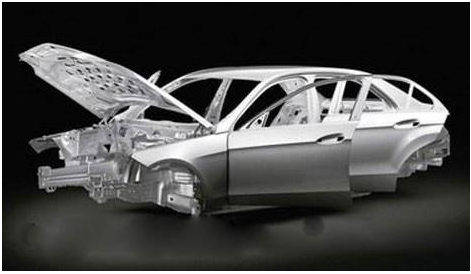Introduction:
Aluminum die casting is a widely used manufacturing process due to its versatility, cost-effectiveness, and ability to produce complex shapes with high precision. The quality and efficiency of the die casting process largely depend on the design and performance of the molds used. In this article, we will explore various techniques and considerations for creating efficient aluminum die casting molds, resulting in enhanced manufacturing results.
1. Material Selection:
Choosing the right material for your die casting mold is critical to obtaining the best results. Aluminum alloys are widely used due to their excellent thermal conductivity and high thermal fatigue resistance. These materials ensure better heat dissipation and extend mold life, making the casting process more efficient.
2. Mold Design:
The design of the die casting mold directly affects the quality of the final product and the efficiency of the manufacturing process. Considerations such as parting lines, ejector pins, cooling channels, and venting systems should be carefully taken into account during the mold design stage.
a. Parting Lines:
The proper placement of parting lines is essential to ensure a smooth flow of molten aluminum and prevent casting defects. Minimizing the complexity of parting line geometry can help reduce cycle time and enhance mold efficiency.
b. Ejector Pins:
Strategically positioned ejector pins facilitate the removal of the casting from the mold. They should be designed to avoid interference with the part features and ensure smooth ejection, minimizing the risk of damage to the mold or the casting.
c. Cooling Channels:
Efficient cooling is critical for the controlled solidification of the molten aluminum, reducing cycle time and improving overall productivity. Well-designed cooling channels help maintain consistent temperature distribution throughout the mold, ensuring uniform casting quality.
d. Venting Systems:
Proper venting is necessary to eliminate trapped air during the casting process, preventing porosity or gas-related defects. Adequate vents should be incorporated into the mold design to allow the escape of air without affecting the flow of molten aluminum.
3. Surface Coatings:
Applying surface coatings to the die casting mold can enhance its durability and performance. Various options, such as PVD (Physical Vapor Deposition) coatings or DLC (Diamond-Like Carbon) coatings, provide improved resistance to wear, corrosion, and sticking of the molten aluminum. These coatings help extend mold life and reduce maintenance requirements, contributing to enhanced manufacturing results.
4. Mold Maintenance:
Regular maintenance and proper cleaning of the die casting molds are essential for optimal performance. Mold surfaces should be kept clean and free from any residue or debris that could affect the flow of molten aluminum. Additionally, periodic inspections and repairs should be conducted to address any wear, cracks, or damage, ensuring consistent and efficient production.
Conclusion:
Creating efficient aluminum die casting molds is crucial for achieving enhanced manufacturing results. By carefully selecting suitable materials, designing molds with consideration for parting lines, ejector pins, cooling channels, and venting systems, and implementing surface coatings, the efficiency and productivity of the die casting process can be significantly improved. Regular mold maintenance and cleaning are equally important to ensure consistent performance and prolong the mold’s lifespan. By implementing these techniques and considerations, manufacturers can attain higher quality products, reduced cycle times, and increased overall efficiency in aluminum die casting.
-

- Maßgeschneiderte Druckgussteile und Komponenten für Fahrradfedergabeln für MTB
-

- Autoteile aus Magnesiumlegierung Druckguss Seitenstufe Trittbrett
-

- Druckguss-Elektrofahrzeug-Mittelmotorgehäuse aus Magnesiumlegierung
-

- CNC-bearbeitete Teile Lenkungshalterung
-

- Laptopgehäuseabdeckung C
-

- Fahrräder für Kinder Kinderfahrräder für 3-16 Jahre altes Kind / OEM-Baby-Kinderfahrrad Kinder-Mountainbikes 2022

 0086-750-5616188
0086-750-5616188 +86 13392089688
+86 13392089688 sales@zhongmei-tech.com
sales@zhongmei-tech.com








